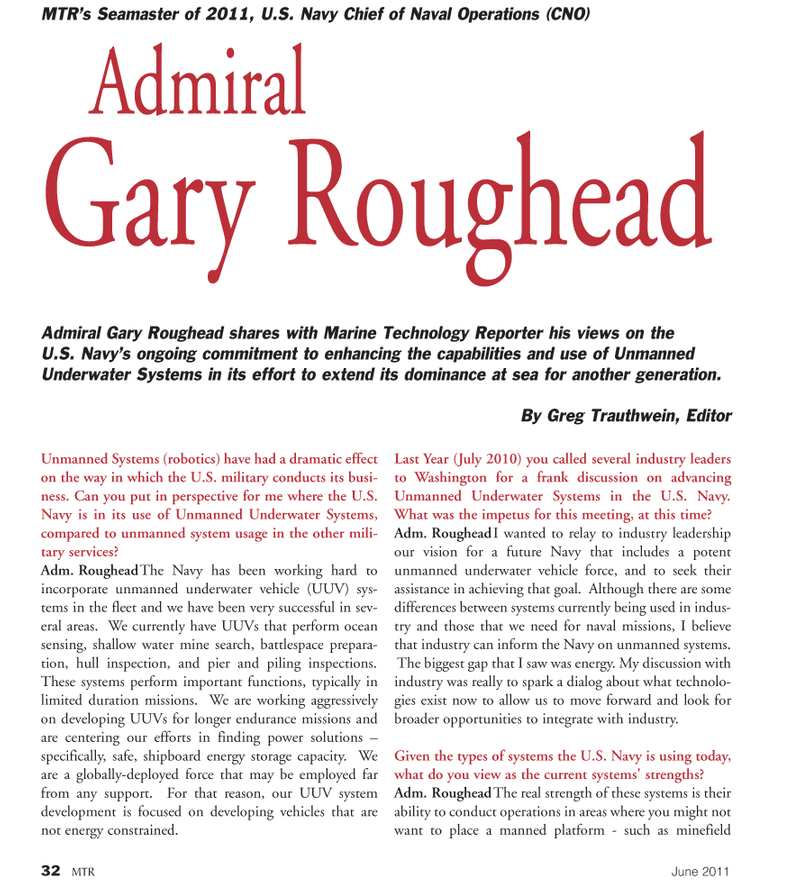
Page 32: of Marine Technology Magazine (June 2011)
Hydrographic Survey
Read this page in Pdf, Flash or Html5 edition of June 2011 Marine Technology Magazine
Unmanned Systems (robotics) have had a dramatic effect on the way in which the U.S. military conducts its busi- ness. Can you put in perspective for me where the U.S.
Navy is in its use of Unmanned Underwater Systems, compared to unmanned system usage in the other mili- tary services?
Adm. RougheadThe Navy has been working hard to incorporate unmanned underwater vehicle (UUV) sys- tems in the fleet and we have been very successful in sev- eral areas. We currently have UUVs that perform ocean sensing, shallow water mine search, battlespace prepara- tion, hull inspection, and pier and piling inspections.
These systems perform important functions, typically in limited duration missions. We are working aggressively on developing UUVs for longer endurance missions and are centering our efforts in finding power solutions – specifically, safe, shipboard energy storage capacity. We are a globally-deployed force that may be employed far from any support. For that reason, our UUV system development is focused on developing vehicles that are not energy constrained.
Last Year (July 2010) you called several industry leaders to Washington for a frank discussion on advancing
Unmanned Underwater Systems in the U.S. Navy.
What was the impetus for this meeting, at this time?
Adm. RougheadI wanted to relay to industry leadership our vision for a future Navy that includes a potent unmanned underwater vehicle force, and to seek their assistance in achieving that goal. Although there are some differences between systems currently being used in indus- try and those that we need for naval missions, I believe that industry can inform the Navy on unmanned systems.
The biggest gap that I saw was energy. My discussion with industry was really to spark a dialog about what technolo- gies exist now to allow us to move forward and look for broader opportunities to integrate with industry.
Given the types of systems the U.S. Navy is using today, what do you view as the current systems' strengths?
Adm. RougheadThe real strength of these systems is their ability to conduct operations in areas where you might not want to place a manned platform - such as minefield 32 MTR June 2011
MTR’s Seamaster of 2011, U.S. Navy Chief of Naval Operations (CNO)
Admiral
Gary Roughead
Admiral Gary Roughead shares with Marine Technology Reporter his views on the
U.S. Navy’s ongoing commitment to enhancing the capabilities and use of Unmanned
Underwater Systems in its effort to extend its dominance at sea for another generation.
By Greg Trauthwein, Editor

 31
31

 33
33
